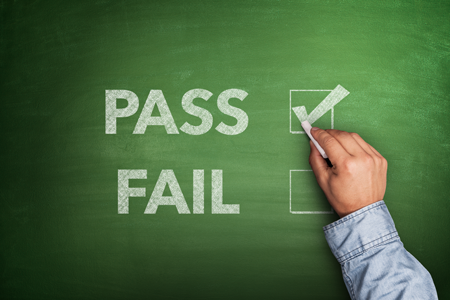Law schools see an increase in bar passage rates, new ABA data shows

Image from Shutterstock.com.
The bar passage rate for first-time test-takers has increased by nearly 5 percentage points, according to data released Monday by the ABA’s Section of Legal Education and Admissions to the Bar.
First-time test-takers who graduate from an ABA-accredited law school in 2019 have an aggregate pass rate of 79.64%, compared to 74.83% for 2018 first-time test-takers, according to a news release. Individual pass rates by school can be found here.
According to the press release, 89.5% of test-takers who graduated in 2017 and had until 2019 to pass the exam did so, compared to 88.64% of 2016 grads. Overall, 97.1% of all 2017 graduates sat for a bar exam within two years of graduation, and the schools gathered bar passage information from 98.6% of 2017 graduates.
In May 2019, the council of the legal ed section revised Standard 316 to require that at least 75% of a law school’s graduates who sat for a bar exam must pass within two years of graduation, rather than the previous five-year requirement. The schools’ bar passage data released Monday is not a “compliance report” for the standard, wrote Barry Currier, the section’s managing director of accreditation and legal education, in the ABA news release.
“The public reports do provide important consumer information for students considering whether and where to attend law school and for others with an interest in legal education,” Currier stated.
According to a June 2019 managing director’s guidance memo, the council, during its February 2020 meeting in Tampa, Florida, plans to review the data and send letters to law schools with class of 2017 pass rates below 75%. Those schools will have an opportunity to respond. At a subsequent meeting, the council, most likely during its May meeting in Chicago, will review the responses.
“Absent a data reporting error, the Council will likely conclude that under Rule 11(a)(4) a school with a two-year ultimate pass rate below 75% is out of compliance with the standard,” the memo states.
Noncompliance with the standard requires public notice, and schools will have two years to demonstrate that they have returned to compliance, according to the memo.



